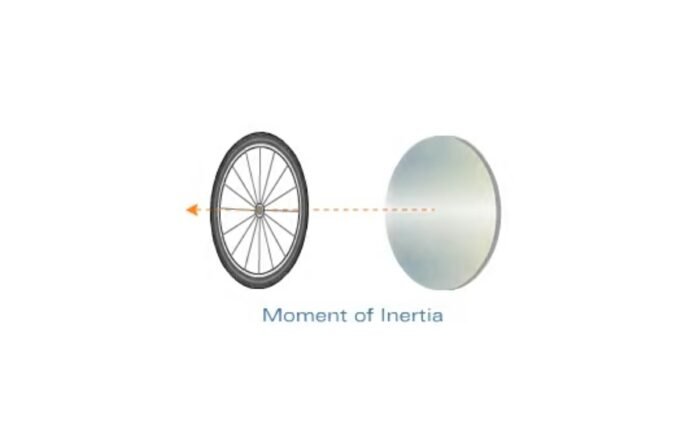Introduction
From a physics perspective, the moment of inertia is a way to quantify a body’s angular mass or rotational inertia. Simply put, it is the body’s resistance to a change in rotation around an axis, which may also be interior or exterior. The body’s mass distribution concerning the axis of rotation is a significant factor in determining the moment of inertia (I). A composite unit of measurement is the moment of inertia. Moment of inertia is measured in kilograms per square metre (kg.m2). Let us discuss the moment of inertia.
Overview
Moment of Inertia
Rotating inertia, the rotational equivalent of mass for linear motion, is known as the moment of inertia. It can be found in the relationships for turning motion mechanics. Specifying the moment of inertia about a selected rotational axis is necessary. The moment of inertia for a point mass is equal to the mass times the square of the distance perpendicular to the rotation axis, or I = mr2. Given that any object may be constructed from a group of point masses, the point mass connection is the foundation for all other moments of inertia.
A particular rotational axis is used to define the moment of inertia. The product of the mass times the square of the distance from the axis yields the moment of inertia of a point mass concerning an axis. From that fundamental concept, the moment of inertia of any extending object is constructed. An integrated is a part of the moment of inertia’s basic form.
In other words, the resistance a body shows to having its speed of rotation along an axis changed by the introduction of torque is described by the term “moment of inertia” in physics (turning force). The axis could be inside or exterior, constant or not. The moment of inertia (I) is calculated by adding the results of calculating each particle’s mass by the square of its distance from the axis in a given body. It is always expressed concerning that axis. The moment of inertia is comparable to mass in linear momentum when computing the angular momentum of a rigid body.
In contrast to angular momentum, which is equal to the moment of inertia I times the angular velocity, linear momentum is defined as the product of the mass m times the velocity v. Let us take two balls, a and b. Let’s assume two steel balls joined by welding to a rod AB and a bar OQ at C. The moment of inertia is defined as I = mr2 /2, when the mass of AB is ignored. It is assumed that all of the particles of each ball’s mass m are concentrated at a distance r from OQ.
Variables Affecting Moment of inertia
Several variables, including the following, influence the moment of inertia:
- The substance’s density
- body’s size and shape
- Axis of rotation
Units of Moment of Inertia
A composite unit of measurement is the moment of inertia. I (moment of inertia) has a size that is kilogram-metre square in the International System (S.I.), where m is written in kilograms and r in metres. I is stated in terms of slug-foot squares in the U.S. conventional system, where m is measured in slugs (1 slug equals 32.2 pounds) and r in feet.
The different moment of inertia unit types and their formula is as follows:
mm4 or in4 is the unit of an area moment of inertia.
kg.m2 is the unit of mass moment of inertia
Formula for Dimensions: M1L2T0
In simple terms, kg.m2 is the S.I. Unit of the moment of Inertia.
Recommended Articles:
Watt-Unit of Power
Unit of Radioactivity and its Advantages and Disadvantages
Physics – Unit of Sound
Physics: Unit of Speed
Unit of Temperature and Its Types of Units
Kg.m2 is the S.I. unit for the moment of inertia. I = (2/3)MR2 is the formula for a thin spherical shell's moment of inertia. The moment of inertia is dependent on the following variables: The substance's density Different units of the moment of inertia include: Moment of inertia in the area The letter "I" or symbol indicates the moment of inertia. Unit of Moment of Inertia FAQs
What is the SI for the moment of inertia?
How much inertia does a thin, spherical shell have?
What are the variables that affect the moment of inertia?
Its size and shape
The rotational axis (distribution of mass relative to the axis)What are the different units of moments of inertia?
Moment of inertia in massGive a symbol for the moment of inertia.
